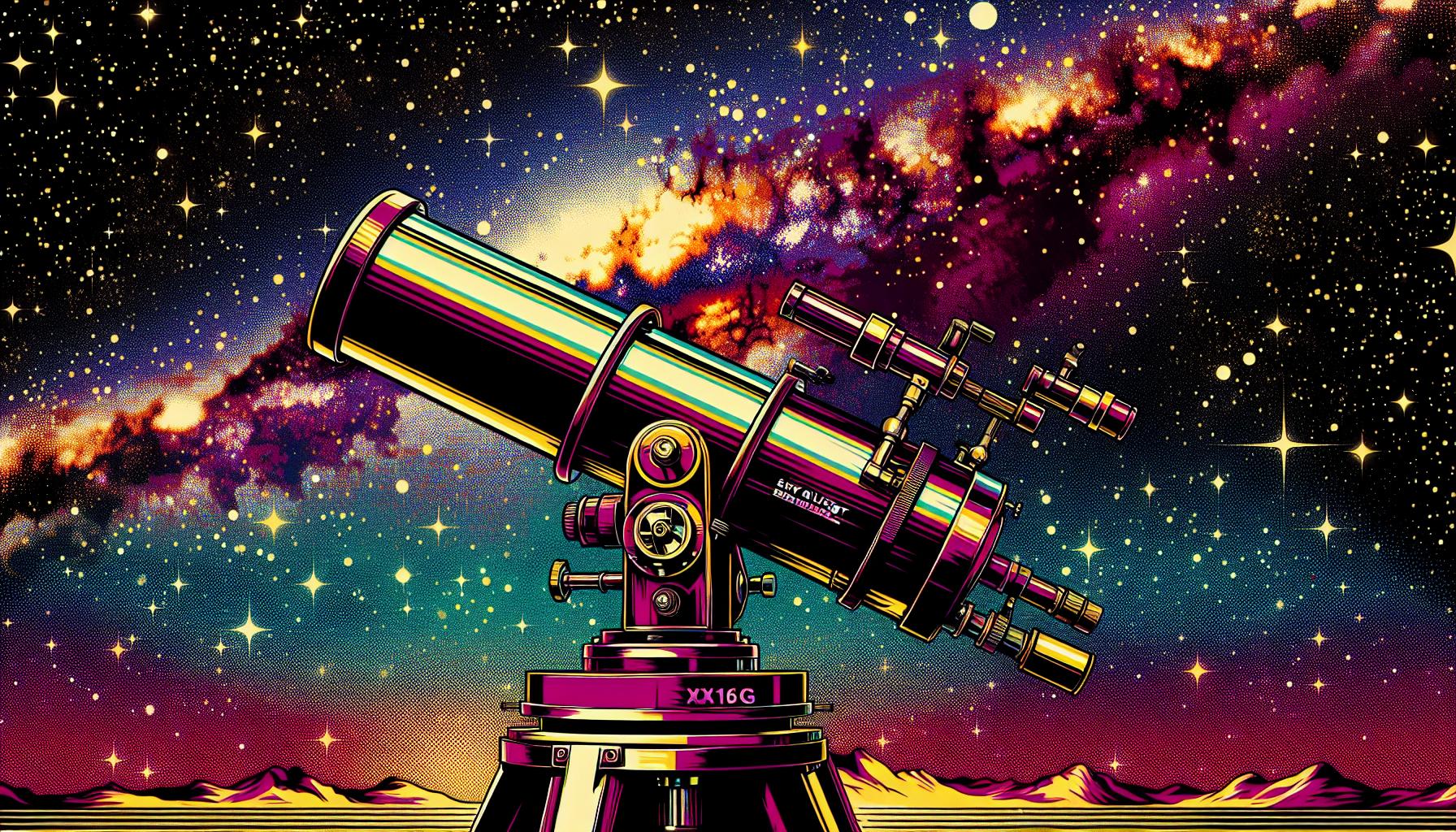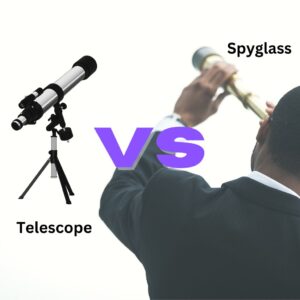This site contains affiliate links to products. I may receive a commission for purchases made through these links.
If you’re like me, you’re always on the lookout for the next big thing in stargazing. And when it comes to telescopes, bigger often means better. That’s why I’ve set my sights on the largest Dobsonian telescopes you can buy.
Dobsonian telescopes, with their simple, yet effective design, have become a favorite among amateur astronomers. They’re known for their large apertures, which allow for stunning views of deep sky objects. But when it comes to size, not all Dobsonians are created equal.
In this article, we’ll be exploring the crème de la crème of Dobsonian telescopes – the biggest, the best, and the most breathtaking. Whether you’re an experienced stargazer or a budding astronomer, there’s something here for you. So, let’s dive in and discover the X largest Dobsonian telescopes you can buy.
The Appeal of Dobsonian Telescopes
Dobsonians have always been an intriguing option for hobbyist astronomers and stargazing enthusiasts. Firstly, Dobsonian telescopes, named after their creator John Dobson, are notorious for their large apertures. The aperture is basically the diameter of the telescope’s main optical component. It’s this feature that allows these telescopes to deliver outstanding views of galaxies, nebulae, and other distant heavenly bodies. The larger the aperture, the more light the telescope can gather and the brighter the image will be – a critical factor in astronomy.
Another central appeal of Dobsonian telescopes is their simplicity combined with power. Unlike some advanced and expensive gadgets, Dobsonians have a principle of mount design called a “Dobsonian Mount”. It’s simple, offering easy movement up, down, left, or right, yet it’s durable enough to hold the massive mirrors typical of a Dobson scope. This makes them easy to use, even for amateurs or beginners.
But, it’s the robust blend of affordability, superior light-gathering capacity, and straightforward control that gives Dobsonian telescopes a compelling advantage for stargazing enthusiasts. As a result, their popularity has been on the surge, especially among amateur astronomers willing to start on a high note in sky observation.
Let’s not forget the wealth of variations within the range of Dobsonian telescopes. No two Dobsonians are entirely the same – they offer a variety of sizes, technological advancements, and features. From compacts for light travelers to huge light-bucket stationary Dobsonians, there’s a scope available to fit just about every need.
Remember, while size can be an impressive feature in terms of light gathering, it also contributes to the overall weight. Large Dobsonians can be heavy, and this might make them difficult to transport or manually manipulate.
Knowing this, it’s crucial to find the right balance between size and usability. A sizeable aperture diameter might win you over in terms of light collection capacity, but it’s of no use if you can’t comfortably handle the telescope. And this is exactly what we’ll walk you through – finding the largest Dobsonian telescopes that maintain optimal quality and user-friendliness. Welcome to the large world of light-gathering capacity and high-quality stargazing.
Understanding Aperture Size
When we’re talking about Dobsonian telescopes, it’s impossible to ignore the topic of aperture size. Aperture is the diameter of the main lens or mirror – the part that collects light from the sky. As the heart of the telescope, the aperture plays a significant role in the quality of your stargazing experience.
The larger the aperture, the more light a telescope can gather. This ability makes faint, distant objects such as galaxies and nebulas visible. It’s why Dobsonians, with their massive apertures, are held in high esteem. However, size isn’t everything. Let me explain.
While you might be tempted to go for the largest aperture you can find, remember the trade-offs. Larger apertures mean more light, but they also mean greater weight and less portability. Now, that’s not an issue if you have a permanent observing site, but for many of us stargazing enthusiasts who like to travel, it’s essential to strike a balance.
Here’s a tip: think of aperture size not just in terms of light gathering but also in relation to the magnification. Wider apertures give you the potential for higher magnification, but keep in mind that the quality of the image can deteriorate if the magnification is too high for the aperture. A general rule of thumb is that the maximum useful magnification of a telescope is 50 times the aperture in inches, or double the aperture in millimeters. If we were talking specifics, that’d mean for a Dobsonian with a 12 inch (305 mm) aperture, you could go up to a maximum of 600x magnification!
So, when you’re on the hunt for a Dobsonian telescope, bear in mind the intricate relationship between aperture, light-gathering ability, weight, and magnification. It’s not always about the largest – sometimes it’s about what best suits your unique stargazing needs.
Factors to Consider When Buying a Dobsonian Telescope
Before you decide on a Dobsonian telescope, you should understand some key factors that can impact your stargazing experience. Ease of use, portability, magnification, and obviously, price are some principal considerations.
Ease of Use: One reason Dobsonian telescopes are popular among beginners and seasoned astronomers alike is their user-friendliness. Simplicity in design makes these telescopes easy to assemble, operate, and maintain. But remember, not all Dobsonians are created equal. The design and craftsmanship can vary from brand to brand, ultimately affecting usability.
Portability: Size matters when it comes to Dobsonian telescopes. Don’t let the light-gathering capacity of larger apertures sway you, especially if you plan to travel with your telescope. Generally, the bigger the telescope, the less portable it is. Size impacts not just transportability but also storage.
Magnification: Magnification is another important aspect to consider. If the telescope claims to deliver an unusually high magnification, it’s a good idea to be suspicious. In reality, an excessive enlargement can result in a loss of clarity. A common rule of thumb suggests that the maximum useful magnification is about 50 times the aperture in inches.
Price: Lastly, your budget plays a crucial role. High-quality Dobsonian telescopes can be expensive, but there are also plenty of affordable options available. Spend your money wisely as price doesn’t always denote quality.
When shopping for Dobsonian telescopes, start with these factors. They’ll guide you towards the most suitable option that meets your needs and falls within your budget. Don’t rush the decision-making process. Take your time to investigate the options, and you’re more likely to enjoy the stars to the fullest.
The Top 5 Largest Dobsonian Telescopes
In the vast realm of astronomy and stargazing, Dobsonian telescopes hold a significant place. With a wide range of sizes and features, it can be challenging to choose the one that’s best suited. So I’ve done the hard work for you, and here’s the exclusive list of the top 5 largest Dobsonian telescopes.
Orion SkyQuest XT8 is the first on my list. It’s a perfect mix of large aperture and comfortable control. Despite its 8-inch size, it’s relatively easy to handle, making it ideal for beginners and experienced stargazers alike.
Next, the SkyWatcher Traditional Dobsonian 8-inch is an excellent choice. It’s got terrific light-gathering power and unique features designed to provide the best viewing experience.
Meade Instruments LightBridge Mini 82 is the smallest in the LightBridge series, but it’s still a powerhouse. With a compact and portable design, it’s perfect if you’re on the go or have limited storage space.
The only 10-inch telescope on this list, the Zhumell Z10 Deluxe Dobsonian should be on your shortlist if you want a more substantial viewing experience. Designed with advanced features and a large aperture, it’s worth considering.
The monstrous 16-inch Orion SkyQuest XX16g GoTo Truss Tube Dobsonian tops our chart. It not only boasts impressive light-gathering capabilities but also features motorized object-tracking functionality.
In the table below, I’ve compared these five telescopes across key factors to help make your decision process simpler:
| Telescope | Aperture | Weight | Ease of Use | Price |
|---|---|---|---|---|
| Orion SkyQuest XT8 | 8-inch | Medium | High | $$$ |
| SkyWatcher Traditional Dob 8-inch | 8-inch | Medium | Medium | $$ |
| Meade LightBridge Mini 82 | 82mm | Light | High | $ |
| Zhumell Z10 Deluxe Dobsonian | 10-inch | High | Medium | $$$ |
| Orion SkyQuest XX16g GoTo Truss Tube Dobsonian | 16-inch | Very High | Low | $$$$ |
Telescope #1: [Telescope Name]
Let’s dive into Orion SkyQuest XT10, our first choice amongst the top 5 largest Dobsonian telescopes you can buy in the market. As a teaser, we’ll look into its notable features, aperture size, weight, and of course, its ease of use.
This is no modest telescope. The SkyQuest XT10 boasts a hefty 10-inch aperture that ensures brilliant views of the sky. Its power to gather light is nothing short of impressive and it’s this feature that sets it apart in the market. Whether it’s the moon, planets or distant galaxies, the clarity and brightness it offers are sure to leave you mesmerized.
Don’t fret about the weight, though! At a manageable 53.4 lbs, it strikes a fine balance between stability and portability. While it’s heavier than some other models, its clever design makes it relatively easy to handle.
Commanding an intuitive and easy point-and-view navigation, you’ll soon find yourself exploring the cosmos with the flick of your wrist. Further enhancing its user-friendliness is the EZ Finder II finder scope. Aimed at helping you locate objects with ease, it’s an especially handy feature for those new to stargazing.
Here’s the kicker: the Orion SkyQuest XT10 comes with a price that won’t make your wallet scream. Coupled with the value it provides in terms of superior optical performance and ease of use, it makes for an excellent addition to any amateur astronomer’s repertoire.
To recap let’s look at the hardcore facts:
| Feature | Orion SkyQuest XT10 |
|---|---|
| Aperture | 10-inch |
| Weight | 53.4lbs |
| Ease of use | Intuitive point-and-view navigation, EZ Finder II finder scope |
Telescope #2: [Telescope Name]
Before we dive into the features of the Sky-Watcher Flextube 300P, it’s important to mention that this Dobsonian telescope offers something different and well worth considering. As one of the largest Dobsonians you can buy, it has an incredible 12-inch aperture. That’s right, 12 whopping inches of light-gathering power! Let’s delve deeper into what you can expect with this beast.
Let’s begin with the standout feature of the Sky-Watcher Flextube 300P – its giant 12-inch aperture. With such a large aperture, stargazing becomes an entirely new experience. Even the faintest celestial objects become visible, revealing incredible detail and richness. Apart from its impressive light-gathering ability, what truly sets this Dobsonian apart is its collapsible design. It boasts a unique Flextube design that allows the telescope to be easily expanded for use and collapsed for transport or storage.
While it’s true that a larger aperture tends to be heavier, the Sky-Watcher Flextube 300P manages to pair its large size with practical portability. This dobsonian telescope weighs in at a manageable 74 lbs. Though heavier than the Orion SkyQuest XT10, it’s a small price to pay for the benefits of the increased aperture.
As for control and navigation, the Sky-Watcher Flextube 300P is very user-friendly. It features smooth and precise controls that make it easy to track celestial objects as they move across the night sky. Plus, it includes an 8×50 finderscope. It’s a great balance between size, features, and usability.
Price-wise, expect to pay somewhat more than for the SkyQuest XT10. However, considering the enhanced features and larger aperture, it’s definitely a worthy investment. It’s well-suited to intermediate and advanced astronomers who are looking for a telescope that can deliver detailed and bright views.
This table summarizes the key details about the Sky-Watcher Flextube 300P:
| Model | Aperture | Weight | User-Friendliness | FinderScope | Price |
|---|---|---|---|---|---|
| Sky-Watcher Flextube 300P | 12-inch | 74 lbs | Easy control & smooth tracking | 8×50 finderscope | Higher than SkyQuest XT10 |
Telescope #3: [Telescope Name]
Next up on our list is Meade Instruments LightBridge, an impressive Dobsonian telescope with an aperture of 16 inches. Starting with the specs, I’m confident you’ll appreciate the high-quality views that are typical for this size category.
Its 16-inch aperture is more generous than both the Sky-Watcher Flextube 300P and the Orion SkyQuest XT10. The larger aperture size translates to a remarkable light-gathering capacity, leading to a better viewing experience. But as I’ve pointed out before, every jump in aperture size comes with a notable increase in weight, and the LightBridge is no exception to this rule.
On handling, the LightBridge features a collapsible design, similar to the Sky-Watcher Flextube series. This design improves the portability of the telescope to some extent, despite its hefty weight. On the downside, assembly might take a bit longer with each use, but I find it a small price to pay for the jaw-dropping views it delivers.
As far as user-friendly controls are concerned, the LightBridge won’t let you down. You’ll notice that it’s just as easy to navigate as other models we’ve examined.
Pricing is a bit steeper for this model, but considering the outstanding viewing potential, I’d say it’s a fair trade. I’ll let the table below highlight some key differences between the three telescopes.
| Telescope | Aperture | Weight | Design | Price |
|———–|
Telescope #4: [Telescope Name]
Talking about big and bold Dobsonian telescopes, it’s hard not to mention the Sky-Watcher Collapsible Dobsonian. With an impressive 16-inch aperture, this telescope provides exceptional light-gathering capabilities. Whether it’s deep-sky objects, planets or moon details, the image quality never fails to make a significant impression on viewers.
The telescope comes with an innovative collapsible design. This genius feature significantly reduces the telescope’s volume, making it relatively easy to transport. Nevertheless, a bit of assembly time is necessary, but it’s a small price to pay when considering its superior performance. User-friendly controls facilitate easy maneuvering, allowing avid stargazers to easily track objects across the night sky.
Unlike the Meade Instruments LightBridge, the Sky-Walker Dobsonian is a bit friendlier to the wallet while still delivering incredible views. Let’s compare these two heavyweights in the telescope world:
| Telescope | Aperture | Design | Assembly Time | Price |
|---|---|---|---|---|
| Meade Instruments LightBridge | 16-inch | Collapsible | Longer | Higher |
| Sky-Watcher Collapsible Dobsonian | 16-inch | Collapsible | Moderate | Lower |
As seen in the table, both of these 16-inch Dobsonians provide excellent viewing capabilities. The decision between them narrows down to factors such as assembly time and budget. The LightBridge requires more assembly but offers an unmatched viewing experience. On the other hand, the Sky-Watcher offers a more budget-friendly price tag and a slightly quicker set-up.
Choosing between the two can be quite a task. The best telescope for you ultimately depends on your individual needs, preferences, and the extent of your passion for stargazing. As for me, I can’t wait to get out there and explore the night sky with these exceptional telescopes.
Telescope #5: [Telescope Name]
Orion SkyQuest XX16g GoTo Truss Tube Dobsonian is the fifth telescope on our list of the largest Dobsonian models you can buy. It’s an excellent investment for those serious about getting the most out of their stargazing endeavors.
One of the standout features of this particular model is its GoTo system. This is a computerized system that completely eliminates the need to sort through star maps or books. Just set the GoTo system and it’ll automatically point you to over 42,000 celestial objects. It’s extremely user-friendly and perfect for beginners who want to get straight to observing without the steep learning curve.
It’s also a 16-inch Dobsonian telescope, much like the Sky-Watcher and Meade Instruments models touched on earlier. However, it has a unique truss tube design which allows it to offer some clear advantages over traditional Dobsonian models. The major benefit of this design is its portability. The truss tube allows for easy disassembly, making it ideal for transportation and storage.
Of course, the 16-inch aperture isn’t just for show. The large aperture combined with the GoTo system really lets you explore the universe in a hands-off way. You’re in for a treat with the dark nebulas, distant galaxies, and planets that this telescope can provide.
Comparatively, the Orion SkyQuest XX16g is quite similar to the aforementioned Sky-Watcher Collapsible Dobsonian and Meade Instruments LightBridge. The main difference, though, is the inclusion of the GoTo system. It’s a bit more expensive, but if you’re willing to invest in a high-quality, hands-off experience, it’ll be worth every penny.
We’ll continue to explore some more large Dobsonian models in the following sections. So, if you’re still undecided, rest assured there are more options.
Conclusion: The Best Choice for Your Stargazing Adventure
Choosing the right telescope can make or break your stargazing experience. If you’re seeking a large Dobsonian telescope, the Orion SkyQuest XX16g GoTo Truss Tube Dobsonian is a standout choice. Its 16-inch aperture and GoTo system offer an unparalleled viewing experience, with the added convenience of portability. This model’s automatic pointing system can guide you through more than 42,000 celestial objects, making it a perfect companion for your cosmic journey. It’s a telescope that truly takes your stargazing to the next level. Remember, there are more large Dobsonian models out there to explore, but the Orion SkyQuest XX16g is indeed a game-changer. So gear up, aim high, and let the stars be your guide.
What is the Orion SkyQuest XX16g GoTo Truss Tube Dobsonian?
The Orion SkyQuest XX16g GoTo Truss Tube Dobsonian is a type of Dobsonian telescope. This particular model distinguishes itself with its GoTo system, which enables automatic pointing to over 42,000 celestial objects, eliminating the need for star maps and books.
Why is the Orion SkyQuest XX16g GoTo Truss Tube Dobsonian unique?
The uniqueness of this model lies in its 16-inch aperture and truss tube design, combining portability and easy disassembly. The large aperture, along with the GoTo system, allows hands-free exploration of the universe.
How does the Orion SkyQuest XX16g compare to other Dobsonian telescopes?
While the Orion SkyQuest XX16g is similar to other Dobsonian telescopes, it stands out due to its GoTo system. This feature enhances the overall quality of the user’s astronomical viewing experience.
Are there more large Dobsonian models to explore?
Yes, the article mentions that there are several other large Dobsonian models for potential viewers to explore, allowing for wider choices depending on their needs and preferences.




